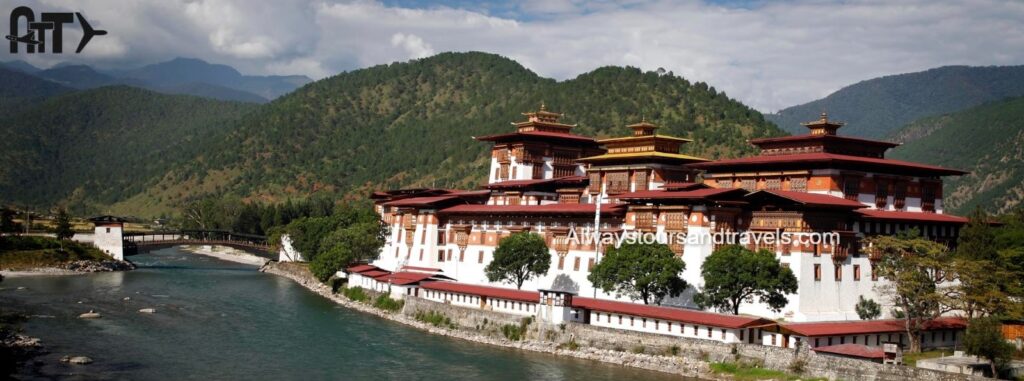ALL ABOUT THE KINGDOM OF BHUTAN

The purely Buddhist Himalayan Kingdom has unsurpassed scenic majesty and vibrant culture. The kingdom is still regarded as one of the last Shangri-La’s in the Himalayan region and is a living heritage of Buddhism. Sandwiched in the Himalayas between India, Nepal, and the Tibet region of China shares the world’s greatest mountains, which makes it an exotic tourist destination. The Bhutanese have safeguarded their ancient way of life, beautiful Dzong, temples, and houses with architecture found nowhere else in the world, which adds up to the call to Bhutan. Thimphu is the capital city & Paro which is a 2 hours’ drive from Thimphu is the only airport in the country. Phuentsholing is an Indo-Bhutan border town and is one of the entry points to Bhutan by surface from India.
Location: Located in the eastern Himalayas, Bhutan is bordered by China in the north & Indian state of Arunachal Pradesh, Sikkim, Assam & West Bengal in the east, west & south.
Area: 38,398 sq. km.
Altitude: Varying from 180 m. to 7550 m. above sea level.
Population: Approx 7 hundred thousand
Capital: Thimphu
Local time: 6 hours ahead of GMT & 30 minutes ahead of IST.
Religion: Mahayana Buddhism & Hinduism.
National Flag – The national flag is rectangular & divided into two parts with a white dragon in the middle. The upper yellow half signifies the country’s secular authority of the King & the lower saffron-orange half signifies the religious practice & spiritual power of Buddhism.
Best time to travel – Bhutan has four distinct seasons, spring, monsoon, autumn, and winter. Spring and autumn is the best time to visit Bhutan, i.e. end of February to the end of March and September to November. If you love flowers, you will get plenty of them in May, June, and July. November, December, January, and February will be blessed with breathtaking mountain views, sunny days, and morning/evening chills.
National Emblem – The National emblem, contained in a circle, is composed of a double diamond thunderbolt placed above a lotus, surmounted by a jewel & framed by two dragons. The double diamond thunderbolt represents the harmony between secular & religious power; which results from the Buddhist religion in its Vajrayana form. The lotus symbolizes purity; the jewel – sovereign power; & the two dragons a male & female stand for the name of the country-the thunder dragon (Druk Yul).
National Symbols

National Tree – Cyprus (Cypresses Corneyana).
National Flower – Blue Poppy (Mecanopsis Grandis).
National Animal – Takin (Budorcas Taxicolor).
National Bird – Raven (Corvus Corax Tibetanus).
Currency – Ngultrum, the currency of Bhutan, has the same value as the Indian rupee, which is also a legal tender.
Food – Staple diet is red rice, buck-wheat, wheat, maize, pork, beef, chicken, yak meat, cheese & chilies (taken as vegetables – not as a spice).
Arts & Crafts – Bhutan is known for handicraft items in bronze, silver & other metals. Sculpting of religious figures is widely practiced, & every temple and houses are large brightly painted & gilded statues of the Buddha & other saints.
Dress – Bhutanese men wear “Gho”, which are longish robes tied around the waist by a cloth belt known as “Kira”. The women’s ankle-length dress is known as “Kira”, which is made of bright-colored fine woven fabric with traditional patterns.
Sports – The national sport of Bhutan is archery. Other traditional sports include Digor-a kind of shot put, darts, & wrestling.
National Day – National day is celebrated on the 17th of December in commemoration of the accession of Gogsar Ughen Wangchuk, the first king of Bhutan to the throne in 1907, in Punakha Dzong.
People – Bhutanese are friendly & hospitable people. The large majority of Bhutanese people are a homogeneous group divided linguistically into three broad sub-groups. These are Sharchops, Ngalong & Lhotshampa.
Architecture – The castle-like Dzong, with their gently tapering walls classic lines, large courtyards & beautiful galleries, are among the finest examples of Bhutanese architecture.
Living Culture – In almost every Dzong (fortresses that house both the monastic & the Govt. administrative wings) there is an annual traditional festival (Tshechus) that normally spans 3–4 days. Colorful & well-choreographed mask dances are performed during the tshechus. Due to the nature of the lunar calendar, exact dates for tshechus vary from year to year.
Getting to Bhutan
By Air:
Druk Air, the National Air Carrier of the Kingdom of Bhutan, operates flights from Paro, the only Airport in Bhutan, to Delhi, Kolkata, Bagdogra, and Guwahati. Bagdogra is well-connected to the major cities of India by various airlines like Jet airways, Kingfisher Airlines, Spice jet, Go Air, and Indian Airlines. One can take the connecting flight to Paro from Bagdogra.
By Road:
Travel overland from Siliguri, Jalpaiguri, and Alipurduar to the nearest Bhutan border town to enter Bhutan.
By Rail:
NJP (New Jalpaiguri) is the nearest major railway station in the Indian State of West Bengal. The other smaller stations are Alipurduar, New Cooch Bihar, and Hasimara, though we recommend NJP as the convenient station for pick-up/drop facilities and 05 hour’s drive to the nearest Bhutan border town of Phuentsholing.
